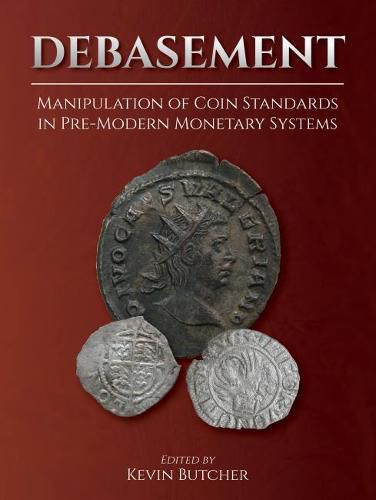Readings Newsletter
Become a Readings Member to make your shopping experience even easier.
Sign in or sign up for free!
You’re not far away from qualifying for FREE standard shipping within Australia
You’ve qualified for FREE standard shipping within Australia
The cart is loading…






The debasement of coinage, particularly of silver, was a common feature of pre-modern monetary systems. Most coinages were issued by state authorities and the condition of a coinage is often seen (rightly or wrongly) as an indicator of the broader fiscal health of the state that produced it. While in some cases the motives behind the debasements or reductions in standards are clear, in many cases the intentions of the issuing authorities are uncertain.
Various explanations have been advanced: fiscal motives (such as a desire to profit or a to cover a deficit caused by the failure to balance expenditure and revenues); monetary motives (such as changing demand for coined money or a desire to maintain monetary stability in the face of changing values of raw materials or labour costs); pressure from groups within society that would profit from debasement; misconduct at the mint; or the decline of existing monetary standards due to circulation and wear of the coinage in circulation. Certain explanations have tended to gain favour with monetary historians of specific periods, partly reflecting the compartmentalization of scholarship. Thus the study of Roman debasements emphasizes fiscal deficits, whereas medievalists are often more prepared to consider monetary factors as contributing to debasements. To some extent these different approaches are a reflection of discrepancies in the amount of documentary evidence available for the respective periods, but the divide also underlines fundamentally different approaches to the function of coinage: Romanists have preferred to see coins as a medium for state payments; whereas medievalists have often emphasized exchange as an important function of currency.
The volume is inter-disciplinary in scope. Apart from bringing together monetary historians of different periods, it also contains contributions from archaeometallurgists who have experience with the chemical and physical composition of coins and technical aspects of production of base alloys.
$9.00 standard shipping within Australia
FREE standard shipping within Australia for orders over $100.00
Express & International shipping calculated at checkout
The debasement of coinage, particularly of silver, was a common feature of pre-modern monetary systems. Most coinages were issued by state authorities and the condition of a coinage is often seen (rightly or wrongly) as an indicator of the broader fiscal health of the state that produced it. While in some cases the motives behind the debasements or reductions in standards are clear, in many cases the intentions of the issuing authorities are uncertain.
Various explanations have been advanced: fiscal motives (such as a desire to profit or a to cover a deficit caused by the failure to balance expenditure and revenues); monetary motives (such as changing demand for coined money or a desire to maintain monetary stability in the face of changing values of raw materials or labour costs); pressure from groups within society that would profit from debasement; misconduct at the mint; or the decline of existing monetary standards due to circulation and wear of the coinage in circulation. Certain explanations have tended to gain favour with monetary historians of specific periods, partly reflecting the compartmentalization of scholarship. Thus the study of Roman debasements emphasizes fiscal deficits, whereas medievalists are often more prepared to consider monetary factors as contributing to debasements. To some extent these different approaches are a reflection of discrepancies in the amount of documentary evidence available for the respective periods, but the divide also underlines fundamentally different approaches to the function of coinage: Romanists have preferred to see coins as a medium for state payments; whereas medievalists have often emphasized exchange as an important function of currency.
The volume is inter-disciplinary in scope. Apart from bringing together monetary historians of different periods, it also contains contributions from archaeometallurgists who have experience with the chemical and physical composition of coins and technical aspects of production of base alloys.